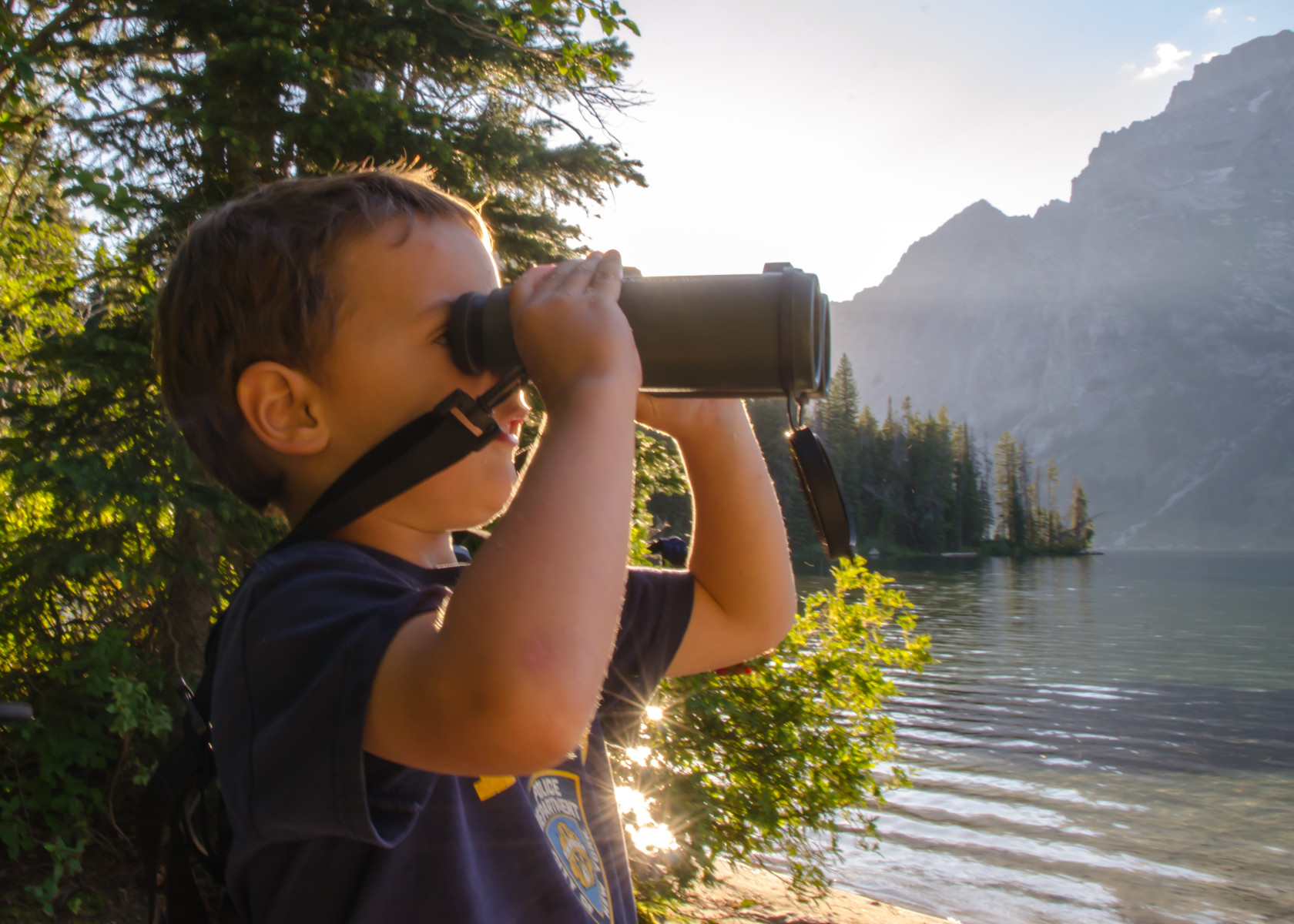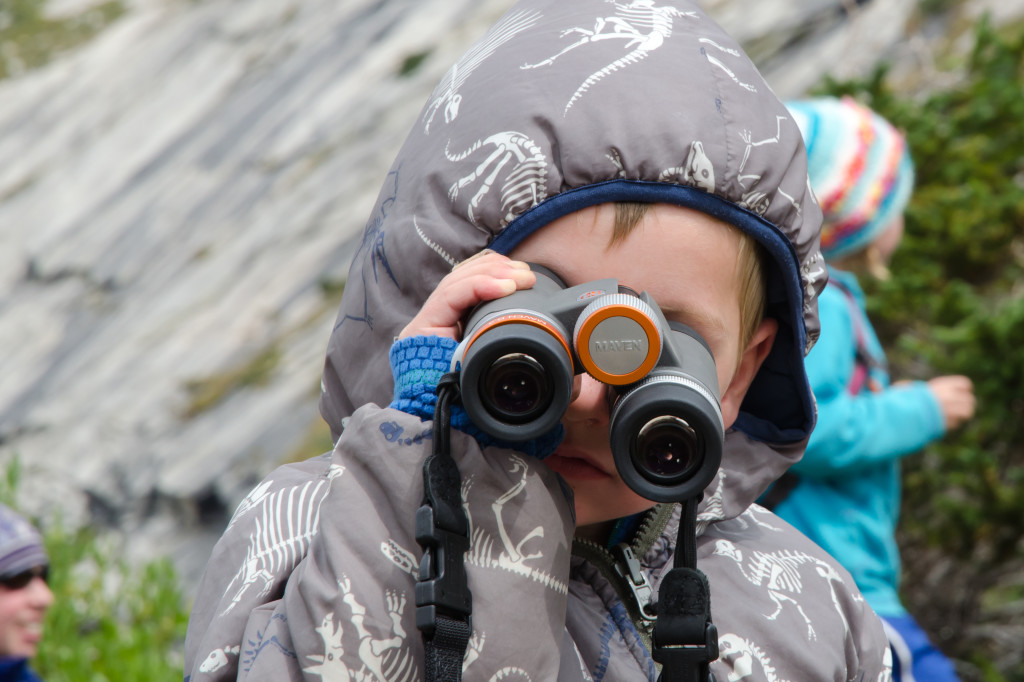Endless bird season

I can’t lay full responsibility at the talons of the great horned owl. My five year-old son was a ready enough accomplice. The puppy played her part too. But if birding is an addiction, that big nocturnal raptor was my gateway species.
Bubo virginianus
Before its hollow bottle baritone “H’hoohoohoo… hoo… hoo” interrupted the stillness of my snow-draped January morning, I’d done most of my “bird watching” over the bead of a 12-gauge shotgun. In fact, I was only in the backyard at four a.m. as a potty-break escort for our weeks-old Labrador retriever, my new bird dog in training.
Moonshine and fresh powder work a strange alchemy though. Soon I was turning-up each morning with an ear out for the birds, full of anticipation.
By the time my little boy joined the investigation one morning with “Dada, there’s um, there’s three now. I know because’n I heard a quieter one from way over… um over there and it had a different pattern”, I’d tumbled headlong into obsession.
Falco sparverious
I sat staring at the muddy dirt road through the windshield, unsure why I’d stopped the truck. Something had caught my eye, something out of place. It was the rock… that wasn’t a rock. The rock that was hopping, struggling with something, making for the shoulder. It had wings. Two sets of wings? I lunged across the console for my binocular, but before I’d trained it on the spot, the bird had flown, escaped with its prize.
The jumble of confused glimpses that made my memory were of a too small hawk, a fierce but tiny raptor, atop a crumpled brown bird. I sat for a moment in stunned silence, trying to make sense of what I’d just seen. Then I raced home for my copy of The Sibley Guide to Birds.
A quality field guide is indispensible. It’s got all the pictures and information you need to positively identify a bird – stuff like identifying characteristics, range maps, habitat descriptions, call sounds and behavior. But as I learned on trying to label the mysterious mini-hawk I’d seen, the books are only as helpful as their reader is prepared.
Which I was not. On any given outing as a hunter, I’m looking for, at most, a small handful of species. I need only decide whether a flushed bird is, or is not, on the predetermined menu, before deciding whether to take the shot.
But a birder has to find a bird, and know exactly what they’ve found. A bird flying in North America could be any one of 914 different species. In Wyoming alone your looking at 544 options. Sorting that bunch takes an astute eye, and quick knowledge of what to look for. Simply pairing a bad mental snapshot with a field guide mug shot, like I’d hoped to do, rarely gets the job done.
Unlike me, bird watching experts make deft categorical leaps from general to specific. Is it a large, medium or small bird, they might ask? Is the large bird like a gull, pelican, shore bird, water fowl, wading bird, raptor, or upland game bird? Is the large waterfowl like a goose, duck, loon, grebe or swan?
In this way, with each answer prompting the next set of experience born questions, a knowledgeable observer will come to look for, and make note of, specific, identifying characteristics. In the case of a swan like bird one may focus on bill shape and coloring as the best differentiator between trumpeter, mute and tundra swans. If the mental flow chart leads to warblers though, the same observer might note instead eye-line and tail feather colors for their future field guide consultation.
The knowledge required of such on the fly mental gymnastics is staggering, even before you factor in the maddening seasonal, regional and life stage variability with-in each specie. As a hunter, I’ve maintained a certain pride of participation. I liked to think my pursuits engender a level of understanding beyond that of more passive enthusiasts. Nobody ever asked me to differentiate between 211 different perching birds though.
On one hand it’s a daunting a task, but the process is alluringly intuitive. We’re evolved to make sense of the world through categories. It’s in our nature. With a single uninformed glance, my brain automatically lumped the bird I’d seen in with its predatory cousins, and noted that it was smaller than expected. That wasn’t enough to pull a positive ID from the field guide, but it shortened the list of suspects from thousands to four or five – a small enough group to bone-up on.
When the same bird perched in a Russian olive outside my office window two days later, I’d done my homework. I noted its long bobbing tail, blue-grey wings and rusty breast – then added American kestrel to my growing life list.

Ardea herodias
“Ooo Dada, look it, look it, a great blue heron, cause see!” said my little boy, pointing at the improbably graceful bird gliding into Frye Lake.
“I see, I see,” I answered. “Is he fishing do you think?”
“Of course not.” he said.
“No?”
“That’s not how herons do it,” he explained matter-of-factly “They hunt by standing still as a statue in the shallow water until a fish swims by, and then, when the fish swims by, they reach down really, really fast and grab it with their beak.” He paused then to demonstrate, complete with gobbling sounds.
“Oh. I see,” I said, wondering where exactly he’d picked-up on heron hunting methods, or, for that matter, acquired the confidence to lecture with such authority. “Still as a statue you say?”
“Yep, still as a statue,” he answered, turning his binocular back to the bird.
I shouldn’t have been surprised. He’s outpaced me from the start. Birds are dramatic, colorful, infinitely varied and nearly everywhere once you start to look, all of which make them ideal objects of a child’s insatiable curiosity. We can’t make it through breakfast without him holding forth on the red-breasted robins (“They eat worms.”), European starlings (“Holy cow, there’s lots of ‘em!”) or ring-necked pheasants he spots through the window (“You can tell he’s a boy pheasant because um… cause see he’s got a long tail and lots of colors”).
His unabashed fascination may explain some of birding’s popularity among adults too. The learning we do in modern life grows more focused and specialized, year over year, from school age onward, until eventually we end up knowing so much about so little, that we can hold our own as functional members of society. The cost, though, is all too often our childlike sense of wonder.
Chasing birds, looking for new ones, scribbling notes and amassing life-lists won’t put food on the table or keep anyone safe at night. As Aldous Huxley said in his dystopian masterpiece, A Brave New World, “A love of nature keeps no factories busy.” But it does feed a part of us that might otherwise be starved for attention.
Dendragapus obscurus
I took a step toward the blue grouse. It didn’t move. Maybe, I thought, it thinks I can’t see it on the shadowy trail. I took another step. The bird held its ground. Maybe, I thought, this is where the phrase “playing chicken” comes from. I took one more step. The football-sized bird erupted in a frenzy of drumming wings. I’d known what was coming, but my pulse leapt all the same.
Before the great horned owls, I probably wouldn’t have noticed the grouse, or if I had, stopped to give it a second glance. Since the owls, stopping and noticing has become a highlight of each day.
The press of daily life is no less urgent, and the claims on my attention no fewer. But the birds prompt me to step back from the noise a dozen or more times each day, to take a slow breath, and to consciously admire the marvel of feathers and flight. A red-tailed hawk watching a pasture at dawn, a raven kiting above a ridge as I run errands; each observation is a micro-vacation, a moment removed from the frenetic rush. Taken together, those moments build a lot of space into a crowded world.
Falco peregrinus
There were no signs of life in the clearing as I stepped with my rifle from the shelter of the trees. Thus I was doubly surprised by the blur of movement that prompted my involuntary crouch. I’d felt it more than seen it, but my eyes tracked it down in time to see a trim grey raptor pull out of its swoop and alight on a white bark pine snag.
I was hunting elk. The meat is important to me. So is the willful participation in life’s fundamentals. The elk, as is their habit, eluded me that bright Fall morning. Luckily the streak overhead brought it own connections. The harvesting of game reminds me that life depends on life. The peregrine falcon reminded me that the arrangement cuts both ways
Thirty-five years ago there were no peregrines in the Wind River Range. They’d been driven to near extinction by DDT. Difficult shifts in regulatory policy and determined reintroduction efforts of Game and Fish have brought them back, but neither would have happened without public buy-in.
They’d be gone today, if no one was watching.
* Editor’s note: A version of this story originally appeared in the November 2015 issue of Wyoming Wildlife Magazine


Because of “a version of this story originally appearing in”, I am a subscriber of Wyoming Wildlife Magazine from Kansas. I thank you for that. Keep it up.
Thanks Freddie! I hope you enjoy your new subscription.
Matt, I’ve been (and will likely continue as) a silent follower of your writing and photography for some time now, but finally decided to take a moment out of the hustle and bustle to let you know that I very much enjoy both. Congrats on getting this piece published in Wyoming Wildlife. Keep up the great work amigo!
That’s awfully kind of you Steve, thanks a bunch. I should should probably fess up though that, as much as I’d like to claim the credit, Steven Brutger shot most of our site’s best photography.